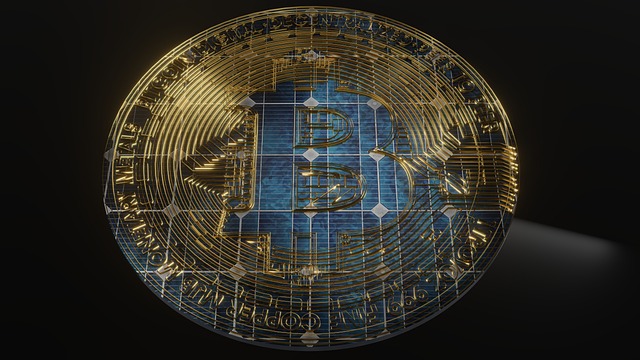Cheaper, faster, riskier — The rise of DeepSeek and its security concerns
Opinion by: Ahmad Shadid, CEO of O.xyzThe DeepSeek saga made it abundantly clear that cheaper AI models can offer breakthrough advantages. DeepSeek challenges traditional investments with low-cost, high-performance technology. Yet its rise brings serious risks. The most concerning aspects of such models are data privacy and security issues. The fact that such advanced models can be developed at a fraction of the standard expense does boost innovation and investment prospects, but at what cost?Cost-cutting AI models can create dangerous vulnerabilities, even if they democratize AI development. A recent Cisco study found that DeepSeek’s R1 model had a 100% attack success rate. In simple terms, the model failed to block a single harmful prompt. Why does security take a backseat during such innovation?DeepSeek sparks AI frenzy in China DeepSeek developers claim that its R1 chatbot costs a fraction of what rivals like OpenAI spend. Industry voices labeled this as the biggest AI chatbot story since November 2022. Microsoft and Amazon Web Services moved quickly to support DeepSeek. This progress comes with risks. DeepSeek’s AI model stores user data on servers in China. Chinese law forces companies to share data with state agencies. This policy may allow the Chinese government to harvest US consumer data.OpenAI raised concerns over DeepSeek in a letter to the US government. The 15-page letter highlighted that DeepSeek’s advancements, particularly with its R1 model, are narrowing the US lead in AI. From a financial viewpoint, DeepSeek’s announcement triggered a global panic. Tech stocks dropped sharply. Nvidia, a leader in chip manufacturing, lost nearly 17% in a single day. Investors reevaluated the cost and competitiveness of the AI industry. The loss in market value reached hundreds of billions of dollars. As risk sentiment spread, the shockwaves moved quickly into other sectors like crypto. The fast and hasty reaction itself is a critical concern. If AI developers want to cash in on this low-cost development trend, we might see more models like DeepSeek emerge that sacrifice user privacy for the sake of rapid deployment. The spillover effects on cryptoThe DeepSeek saga revealed a more concerning trend for the crypto industry. Cryptocurrencies have grown closely linked with tech stocks. When DeepSeek hit the headlines, the crypto market was not spared. Bitcoin (BTC), the most prominent digital asset, fell below $100,000. Analysts also noted that Bitcoin’s six‐month rolling correlation with the Nasdaq Composite rose to about 0.5. This indicates that risk assets like Bitcoin follow suit when tech stocks falter. So, future developments that damage the mainstream tech market can also take a toll on the crypto market. Critics, including Jean Rausis of Smardex, maintain that DeepSeek’s technology “has nothing to do with Bitcoin” on a fundamental level. The prevailing market fear, however, meant that any shock in the tech sector transmitted quickly to the crypto market. Many Bitcoin miners had moved into AI data center operations and saw shares decline by 13%–18%. This drop added to the overall uncertainty in the market.Another concern is the increasing avenue of scams. Several DeepSeek-themed or even fake AI-themed tokens emerged and captured investors’ attention. New investors would know very little about trading on decentralized exchanges and identifying pump-and-dump or rug-pull schemes. Security risks that can’t be ignored Security researchers pointed out that the DeepSeek R1 iOS app uses outdated encryption. Such flaws expose users to the risk of cyberattacks and data breaches. This cost-cutting can leave the system vulnerable to manipulation and misuse. The possibility that a low-cost AI model might serve foreign state interests casts a long shadow over its adoption.Recent: OpenAI expects to 3X revenue in 2025 but Chinese AI firms are heating upSecurity risks of this nature require urgent attention from companies and regulators alike. US officials worry about the storage of sensitive consumer data on Chinese servers. Regulators may impose stricter data protection standards to safeguard market confidence. Industry experts also debate the long-term influence of DeepSeek. Some argue that its cost-efficiency could push the entire AI sector forward. They see lower training costs as an opportunity to drive innovation and increase competition. This could lead to broader adoption of AI tools and lower costs. Yet the security shortcomings remain unresolved. The risk that cheaper models expose users to data breaches and cyberattacks overshadows potential benefits.What’s ahead? As regulators and industry leaders step in to examine these issues, the future of AI depends on how well we manage these security risks. We must demand higher standards for data protection, even as we push for innovation. DeepSeek’s case reminds us that breakthroughs in efficiency must come with strong safeguards. The choices made now will shape the future of AI and consumer data protection. The debate over cheaper, faster but riskier technology is far from over and will continue to influence the tech and crypto space for years to come.Opinion by: Ahmad Shadid, CEO of O.xyz. This article is for general information purposes and is not intended to be and should not be taken as legal or investment advice. The views, thoughts, and opinions expressed here are the author’s alone and do not necessarily reflect or represent the views and opinions of Cointelegraph.
XRP price holds above key trendline — Can whale accumulation push it to $3?
XRP (XRP) has been trapped within a tight range over the last eight days. The altcoin trades just above its $2.00 support after a marketwide recovery over the weekend.Onchain and technical data now show that the XRP/USD pair is well-positioned for a breakout toward $3.00.XRP/USD daily chart. Source: Cointelegraph/TradingViewXRP whale accumulation is backXRP’s price has been consolidating between $2.03 and $2.13 since April 14. The daily relative strength index (RSI) remained flat at around 49 over the same period, signaling market indecision.Despite this sideways price action, whale activity paints a promising picture, with onchain data showing large investors took advantage of the drop to $1.61.Related: Coinbase Derivatives lists XRP futuresXRP whale addresses holding between 10 million and 100 million XRP (black line) have increased sharply since April 1, according to data from Santiment. Similarly, addresses holding more than 1 billion XRP (red line) have steadily increased as well. This whale cohort currently accounts for 39.37% of the total XRP supply, compared to 37.67% toward the end of March. This possibly underscores the confidence of these large investors in XRP price rising despite growing macroeconomic risks and uncertainties. XRP supply distribution. Source: SantimentAdditionally, XRP experienced a significant drop in exchange reserves. XRP balance on exchanges peaked at 3.27 billion XRP in November 2024. Today, around 2.7 million XRP are held on exchanges. The metric has also dropped by 10% over the last 30 days despite the market turbulence experienced since the beginning of April.XRP balance on exchanges. Source: CryptoQuantCan XRP price rise to $3?XRP’s price action between April 7 and April 22 has led to the formation of a bull flag pattern on the daily chart. The price is retesting the upper trendline of the flag at $2.10, suggesting that a possible breakout is in play.Note that the price has unsuccessfully tried to rise above this trendline two to three times in the last ten days, with each retest leading to new buyers accumulating around this region.A decisive close above this trendline could see XRP recover from the current level. It may break out toward the flag’s technical target at $2.93 or the $3.00 psychological level if backed by strong volume.XRP/USD daily chart. Source: Cointelegraph/TradingViewSeveral analysts echoed this bullish outlook, citing XRP’s consolidation as a precursor to a significant move upward.Citing a chart showing XRP price consolidating above $2.00 in the weekly timeframe, popular trader Dark Defender said the altcoin was retesting a key multimonth resistance line.If this resistance is broken, the price will break out, with Wave 5 playing out toward $4.00.“The XRP is bullish, and the crypto is more bullish than ever before.”XRP/USD daily chart. Source: Dark DefenderThe key levels to watch are the $2.22 and $2.75 on the upside and the $1.80 and $1.61 on the downside, according to the analyst. Meanwhile, fellow trader CasiTrades said that the rejection at $2.24 implied that the price is likely to sweep major support levels around $1.90 or $1.55 before “XRP is ready to break out.”As earlier reported by Cointelegraph, Wyckoff reaccumulation and falling wedge patterns are painting a bullish target for XRP above $3.50.This article does not contain investment advice or recommendations. Every investment and trading move involves risk, and readers should conduct their own research when making a decision.
US judge transfers Binance lawsuit to Florida, citing first-to-file rule
A US judge has granted Binance’s motion to transfer a case involving allegations it facilitated money laundering to the Southern District of Florida due to a similar case that had already been before the courts there.The case, filed in August 2024 in Washington, focused on the same core issue as a suit filed in June 2023 in Florida, accusing Binance of allowing cybercriminals to use the platform for money laundering, US District Judge Barbara Rothstein said in an April 21 order. “Although the two complaints describe the proposed classes in slightly different terms, both encompass the same proposed class of individuals whose cryptocurrency was stolen and transferred to a Binance.com account during the relevant period,” Judge Rothstein said.“Therefore, this Court concludes that the classes of plaintiffs are sufficiently similar to warrant application of the first-to-file rule.”US District Judge Barbara Rothstein said transferring the Washington lawsuit to Florida was appropriate given the similarity to a case already being heard there. Source: Law360The first-to-file rule allows a court to decline a ruling on a matter when a complaint involving the same parties and issues has already been filed in another district. Generally, the court that first hears the case usually retains jurisdiction, according to legal resource LSD Law.Plaintiffs say the lawsuits differ in key areas Lawyers acting for the plaintiffs in the Washington case argued that it differed from the Florida suit because it added other accusations not present in the Florida lawsuit and named former CEO Changpeng “CZ” Zhao as a defendant. They also argued that transferring the case could postpone both court actions to the “detriment of all plaintiffs.”Jude Rothstein said in her ruling that it’s not apparent transferring the suit would delay resolution in either case, and would promote efficiency by “avoiding duplicative litigation,” which is one of the “first-to-file rule’s purposes.”“To allow two parallel class actions to proceed in separate districts would be duplicative and inefficient,” she said. Related: Binance to face class action after US Supreme Court denies petition for reviewThree crypto investors launched a suit in August 2024 against Binance and CZ in Washington, alleging their crypto was stolen and the funds were sent to Binance by the thieves to launder the funds.A year before, Michael Osterer filed his lawsuit in Florida in June 2023, alleging Binance aided the conversion of stolen crypto. A Florida court ordered the case to arbitration in July 2024.Magazine: SEC’s U-turn on crypto leaves key questions unanswered
Paul Atkins, nominated by Trump, has been sworn in as SEC chair
Paul Atkins has officially been sworn in as the 34th chairman of the Securities and Exchange Commission.The April 21 announcement comes nearly two weeks after Atkins’ position was confirmed by the US Senate in a 52-44 vote on April 9.“I am honored by the trust and confidence President Trump and the Senate have placed in me to lead the SEC,” Atkins said in a statement.“As I return to the SEC, I am pleased to join with my fellow Commissioners and the agency’s dedicated professionals to advance its mission to facilitate capital formation; maintain fair, orderly, and efficient markets; and protect investors.”Atkins is widely expected to lead a more crypto-friendly SEC than former chair Gary Gensler under the Biden administration.Atkins also previously served as an SEC commissioner between 2002 and 2008 under former President George W. Bush.His confirmation was reportedly delayed due to additional financial disclosures that he needed to file as a result of marrying into a billionaire family. Some of those financial disclosures reportedly revealed that Atkins owned up to $6 million worth of crypto-related investments, including crypto custody platform Anchorage Digital and blockchain tokenization platform Securitize.The announcement means Atkins has effectively taken over from acting chair Mark Uyeda, who has helped the SEC establish a Crypto Task Force to strengthen rapport between the agency and industry players over the last few months.The securities regulator has also dismissed several high-profile crypto-related investigations and enforcement actions undertaken by the Gensler-led SEC, including cases involving Coinbase, Consensys, Gemini and Uniswap.Related: Crypto industry is not experiencing regulatory capture — AttorneyMagazine: SEC’s U-turn on crypto leaves key questions unansweredThis is a developing story, and further information will be added as it becomes available.
Bitcoin longs cut $106M — Are Bitfinex BTC whales turning bearish above $86K?
Despite Bitcoin’s (BTC) price reaching its highest level in over three weeks, traders on Bitfinex reduced their leveraged long (bullish) positions on margin contracts by more than $100 million between April 17 and April 19. This reduction has led to speculation that Bitcoin whales may be anticipating a price correction or, at the very least, are not confident in further short-term gains. Let’s look closer at whether this could be the case. Bitfinex Bitcoin whales remain bullishBitcoin surged above $86,000 on April 21 after US President Donald Trump openly discussed the possibility of replacing Federal Reserve Chair Jerome Powell. Trump criticized Powell for not acting swiftly enough to ease monetary policy. Additionally, investors are increasingly risk-off due to concerns about a recession as the global trade war escalates, particularly given the ongoing uncertainty in US-China relations.The rationale behind this profit-taking in margin markets is especially noteworthy, as Bitcoin’s price has remained below $90,000 since early March, prompting some investors to question the likelihood of a sustainable decoupling from traditional markets. The S&P 500 index futures are trading 1.1% below their closing price on April 17, and rising political tensions in the US are further eroding investor sentiment.April 2025: BTC/USD (left, orange) vs. Bitfinex BTC margin longs. Source: TradingView/CointelegraphBitcoin margin longs on Bitfinex stood flat at 80,400 BTC between April 10 and April 17, indicating strong confidence from bullish traders as this level neared a seven-month high. However, even as BTC’s price reclaimed the $83,000 level, these traders chose to reduce their leveraged bullish positions by 1,250 BTC, equivalent to $106 million.Historically, Bitfinex traders are known for rapidly opening or closing substantial Bitcoin margin positions, indicating that whales and large arbitrage desks are typically behind these movements. Nevertheless, it is not accurate to suggest that Bitfinex whales have shifted to a bearish stance, considering their margin longs currently total 79,136 BTC, valued at $6.86 billion, while margin shorts amount to just 326 BTC.Related: Bitcoin whales absorb 300% of newly mined BTC supply — Is $100K next?The significant difference between bullish and bearish positions can be attributed to the platform’s notably low 2% annual interest rate. In comparison, traders utilizing two-month BTC futures currently pay a 5.7% annualized premium. This disparity creates opportunities for arbitrage, as one can open Bitcoin longs on the margin market and simultaneously sell the equivalent position on BTC futures to capture the difference.BTC doesn’t often move with Bitfinex leverage changesFurthermore, Bitcoin’s price does not always correlate directly with changes in leveraged positions on Bitfinex. For instance, in the two weeks ending March 10, whales increased their margin longs by 13,454 BTC, yet Bitcoin’s price declined from $95,930 to $67,076 during the same period. Similarly, margin longs decreased by 11,047 BTC in the two weeks ending Dec. 16, 2024, while Bitcoin’s price rose from $96,200 to $106,400.Dec. 2024: BTC/USD (left, orange) vs. Bitfinex BTC margin longs. Source: TradingView/CointelegraphHowever, these sophisticated investors have demonstrated strong market timing over the longer term. For example, Bitcoin’s price eventually dropped below $58,000 on Dec. 23, 2024, after margin-long positions had already been reduced by 26% in the preceding 30 days. This pattern suggests that these traders are generally highly profitable but also display a significantly higher risk tolerance and patience compared to the average investor.Ultimately, a $106-million reduction in BTC margin longs is not sufficient evidence to claim that professional traders are turning bearish.As Cointelegraph reported, onchain data suggests Bitcoin whales have grown in number throughout March and April despite the price slump, suggesting accumulation.This article is for general information purposes and is not intended to be and should not be taken as legal or investment advice. The views, thoughts, and opinions expressed here are the author’s alone and do not necessarily reflect or represent the views and opinions of Cointelegraph.
El Salvador works with Nvidia to develop sovereign AI infrastructure
El Salvador, the first country in the world to adopt Bitcoin as legal tender, is working with the computer chip giant Nvidia to implement artificial intelligence for national development.El Salvador signed a letter of intent to collaborate with Nvidia on “sovereign AI to drive innovation and economic growth,” the National Bitcoin Office (ONBTC) of El Salvador announced on X on April 21.As part of the collaboration, El Salvador will benefit from Nvidia’s AI tools, resources and expertise, enabling the development of sovereign AI capabilities targeting priorities related to culture, language, environment and economy.“El Salvador will focus on building domestic AI infrastructure, upskilling the workforce, and creating solutions to address local challenges such as improving healthcare delivery, advancing education, and boosting economic productivity,” the announcement said.AI training for state officials and developersEl Salvador’s latest collaboration with Nvidia marks the country’s commitment to encouraging AI usage to optimize multiple processes within the government and society.With its new AI push, El Salvador intends to establish AI training programs for developers, researchers and government officials to “ensure the nation has the talent to sustain its AI ambitions.”Source: The Bitcoin OfficeOne example includes the creation of AI-driven models to forecast weather and rainfall, which would support emergency response, protect residents in landslide-prone areas and optimize hydroelectric power management.Not the first AI initiative for El SalvadorEl Salvador’s Nvidia partnership adds to a growing list of AI-focused initiatives.In March 2025, the ONBTC announced Salvador’s university-level public education AI program CUBO_ai, touting it as the “only national education program bringing in top-tier field experts.” The program was announced with support from major Bitcoin bull Cathie Wood, who is expected to give the first lecture as part of the program.An excerpt from the CUBO_ai announcement by El Salvador. Source: The Bitcoin OfficeLast year, Wood predicted that El Salvador’s Bitcoin (BTC) and AI plans may boost GDP tenfold by 2029.Related: Only 11% of El Salvador’s registered Bitcoin firms operationalWhile El Salvador has been aggressively introducing AI initiatives, its Bitcoin ambitions have been somewhat deterred.In early March, the International Monetary Fund moved to restrict further Bitcoin purchases by El Salvador as part of an extended $1.4 billion funding arrangement with the country. However, the government has continued stacking 1 Bitcoin a day, raising questions about the implications of the deal with the IMF.Magazine: Your AI ‘digital twin’ can take meetings and comfort your loved ones
Pavel Durov says Telegram would exit markets before betraying users
Telegram CEO Pavel Durov expressed concerns over a growing threat to private messaging in France and other European Union countries, warning that Telegram would rather exit certain markets than implement encryption backdoors that undermine user privacy.In an April 21 post to his “Du Rove’s channel” on Telegram, he posted a message about the EU’s increasing efforts to weaken messaging encryption by adding backdoors, a method that would allow authorities to bypass encryption and access private user data.Durov cited initiatives from French and EU lawmakers to require messaging apps like Telegram to implement backdoors for police access and stressed Telegram’s commitment to digital privacy.“Telegram would rather exit a market than undermine encryption with backdoors and violate basic human rights,” Durov stated, adding: “Unlike some of our competitors, we don’t trade privacy for market share.”Backdoors can be exploited by criminalsIn his message, Durov highlighted that the biggest problem behind encryption backdoors lies in their accessibility not only by authorities but also by hackers and foreign agents.“It’s technically impossible to guarantee that only the police can access a backdoor,” Durov said, adding that backdoors would put users’ private messages at risk of being compromised.He added that criminals would likely turn to lesser-known apps and use virtual private networks (VPNs) to avoid detection, rendering such regulations ineffective. Telegram “never disclosed a single byte” of private messagesDurov said that while Telegram complies with valid court orders in some jurisdictions, such as disclosing IP addresses and phone numbers found to be involved in criminal activity, it has never exposed any private messages:“In its 12-year history, Telegram has never disclosed a single byte of private messages. In accordance with the EU Digital Services Act, if provided with a valid court order, Telegram would only disclose the IP addresses and phone numbers of criminal suspects — not messages.”He urged privacy advocates to keep communicating with lawmakers and promote encryption as a protection tool of privacy and safety for ordinary people, rather than see it as a criminal tool. “Losing that protection would be tragic,” Durov said.“The battle is far from over”Although the French National Assembly rejected a proposal to allow hidden access to private messages in March, Durov said the EU’s war on digital privacy is far from over.Durov cited the European Commission’s “ProtectEU” proposal from early April. The proposal aims to find “technological solutions to enable lawful access to data by law enforcement authorities in 2026.”An excerpt from the EC’s ProtectEU proposal. Source: EUThe proposal has been heavily criticized by digital privacy advocates and some European lawmakers, with Finnish MEP Aura Salla suggesting that introducing encryption backdoors “fundamentally undermines the very cybersecurity principles ProtectEU aims to uphold.”Related: EU could fine Elon Musk’s X $1B over illicit content, disinformation“No country is immune to the slow erosion of freedoms. Every day, those freedoms come under attack — and every day, we must defend them,” Durov concluded.Durov’s warning about threats to privacy and freedom in the EU comes amid an ongoing legal case in France against the Telegram CEO involving allegations of facilitating a platform that enables illicit transactions.According to French prosecutors, Durov faces up to 10 years of prison time in addition to a $550,000 fine if convicted.Magazine: Altcoin season to hit in Q2? Mantra’s plan to win trust: Hodler’s Digest, April 13 – 19
Over 13K institutions exposed to Strategy as Saylor hints at BTC buy
Strategy co-founder Michael Saylor hinted at an impending Bitcoin (BTC) purchase by Strategy and said that more than 13,000 institutions now have direct exposure to the company.The company’s most recent acquisition of 3,459 BTC, valued at over $285 million at the time of purchase, on April 14, brought Strategy’s total holdings to 531,644 BTC, valued at over $44.9 billion.Saylor followed up on the BTC chart, which he typically posts on Sundays to signal an imminent BTC acquisition, with a breakdown of investor exposure to the company. The executive wrote in an April 20 X post:”Based on public data as of Q1 2025, over 13,000 institutions and 814,000 retail accounts hold MSTR directly. An estimated 55 million beneficiaries have indirect exposure through ETFs, mutual funds, pensions, and insurance portfolios.”Strategy’s growing popularity among retail and institutional investors is significant due to the company siphoning capital from traditional financial markets and into Bitcoin. Increased capital flows translate into the company accumulating and holding more BTC, slowly increasing the price of the supply-capped digital asset.Strategy’s chart of Bitcoin acquisitions. Source: SaylorTrackerRelated: Has Michael Saylor’s Strategy built a house of cards?Michael Saylor’s stock market-to-BTC pipelineStrategy issues corporate debt and equity to finance its Bitcoin acquisitions, giving holders indirect exposure to BTC and feeding capital from traditional financial markets into the Bitcoin market.In December 2024, Strategy was added to the Nasdaq 100, a weighted stock market index that tracks the 100 largest companies by market capitalization on the Nasdaq exchange.The inclusion of Strategy in the Nasdaq 100 will draw in even more capital to BTC from passive investors holding the tech-focused index in their portfolios.Strategy’s stock is currently trading at around $317. Source: TradingViewIn February 2025, Bitcoin analyst Julian Fahrer reported that 12 US states had exposure to Strategy, including California, Florida, Wisconsin, North Carolina, Arizona, Colorado, Illinois, Louisiana, Maryland, New Jersey, Texas, and Utah.Bloomberg exchange-traded fund (ETF) analyst Eric Balchunas recently said that inflows from Bitcoin ETFs and institutional inflows from companies like Strategy have shored up the Bitcoin market against dumping by short-term speculators.The analyst added that Bitcoin ETFs recorded approximately $2.4 billion in capital flows year-to-date, helping to cushion the price of the digital asset.This article does not contain investment advice or recommendations. Every investment and trading move involves risk, and readers should conduct their own research when making a decision.Magazine: ‘Bitcoin layer 2s’ aren’t really L2s at all: Here’s why that matters
Vitalik Buterin proposes swapping EVM language for RISC-V
Ethereum co-founder Vitalik Buterin has proposed replacing the current Ethereum Virtual Machine (EVM) contract language with the RISC-V instruction set architecture to improve the speed and efficiency of the Ethereum network’s execution layer.Buterin’s April 20 proposal outlined several long-term bottlenecks for scaling the Ethereum network including, stable data availability sampling, ensuring block production remains competitive, and zero-knowledge EVM proving.The Ethereum co-founder argued that implementing the RISC-V architecture in smart contracts would keep block production markets competitive and improve the efficiency of zero knowledge functions for the execution layer. Buterin wrote:”The beam chain effort holds great promise for greatly simplifying the consensus layer of Ethereum, but for the execution layer to see similar gains, this kind of radical change may be the only viable path.”The proposal highlights the Ethereum network’s struggle to improve throughput and remain competitive with next-generation monolithic blockchains such as Solana and the Sui networks at a time when investors are losing confidence in the original smart contract blockchain.Buterin provides numbers suggesting that implementing the proposal could lead to efficiency gains of 100x. Source: Vitalik ButerinRelated: Vitalik Buterin unveils roadmap for Ethereum privacyEthereum’s scaling woes and a collapse of Ether’s priceEthereum’s blob fees, transaction fees taken from Ethereum layer-2 scaling networks, dropped to a weekly low of 3.18 Ether (ETH) during the week of March 30, according to data from Etherscan.Using current Ether prices, the 3.18 ETH collected for blob fees during the period equaled approximately $5,000.In April 2025, Ethereum network fees dropped to their lowest levels since 2020, averaging around $0.16 per transaction.According to Santiment marketing director Brian Quinlivan, the dramatic reduction in fees is due to fewer users sending transactions on the Ethereum base layer, opting instead to use smart contracts or one of Ethereum’s many layer-2 scaling solutions.Ethereum network weekly transaction fees declined significantly in Q1 2025. Source: Token TerminalEthereum’s layer-2 networks have been described as a double-edged sword that dramatically lowered transaction costs on the base layer but also cannibalized the Ethereum base layer’s revenue.Concerns surrounding revenue generation on the base layer and the corrosive effects of layer-2 scaling solutions on Ethereum’s market share have driven the price of Ether to historic lows and could plunge Ether prices further to around $1,100 if investor confidence continues to wane.Magazine: Proposed change could save Ethereum from L2 ‘roadmap to hell’
Bitcoin can reach $138K in 3 months as macro odds see BTC price upside
Bitcoin (BTC) faces “unprecedented” US dollar correlation as new BTC price research gives a $75,000 floor.In one of his latest analyses on April 18, network economist Timothy Peterson calculated that BTC/USD may rise as high as $138,000 within the next three months.BTC price probabilities give bulls the upper handBitcoin is navigating highly unusual macroeconomic conditions as a result of the ongoing US trade war, but history still offers clues as to where BTC price action may head next.For Peterson, the US High Yield Index Effective Yield, currently at over 8%, holds the key.“This has happened 38 times since 2010 (monthly data),” he summarized. “3 months later: Bitcoin was up 71% of the time. The median gain was +31%. If it went lower, the worst loss was -16%.”US High Yield Index Effective Yield. Source: Timothy Peterson/XWith BTC/USD performance thus skewed to the upside, Peterson gave hope to those waiting for a rematch of all-time highs from January.“This likely puts Bitcoin between $75k and $138k within 90 days,” he concluded.Bitcoin would need to deliver 62% gains within that period to achieve that maximum level.As Cointelegraph reported, Peterson has been a frequent contributor to BTC price forecasts in 2025, with one of his proprietary tools, Lowest Price Forward, giving 95% odds of a $69,000 floor in March.Bitcoin DXY correlation will flip negativeTurning his attention to the dramatic drop in the US dollar index (DXY) thanks to US trade tariffs, he predicted that its unusual positive correlation with BTC would ultimately end.Related: Bitcoin price volatility ‘imminent’ as speculators move 170K BTC — CryptoQuant“This level of BTC-USD correlation is unprecedented. The relationship is not causal, but reflective of underlying conditions affecting both,” he explained. “Historically inverse, the relationship flipped in 2024 as both assets began responding to the same macro stressors: tightening liquidity, high real rates, and global risk aversion. BTC will decouple and rise when real yields drop + liquidity returns.”BTC/USD vs. US dollar index (DXY). Source: Timothy Peterson/XDXY continued to stay below the key 100 mark on April 18, per data from Cointelegraph Markets Pro and TradingView, reflecting some of its lowest levels in the past three years.Earlier, separate analysis nonetheless saw the potential for Bitcoin to directly benefit from dollar weakness in a manner similar to the early innings of the bull run in 2023.US dollar index (DXY) 1-week chart. Source: Cointelegraph/TradingViewThis article does not contain investment advice or recommendations. Every investment and trading move involves risk, and readers should conduct their own research when making a decision.










